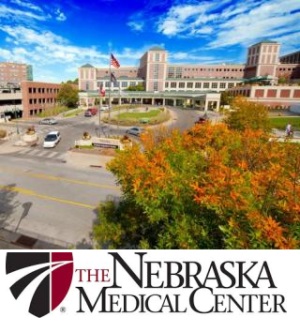By Ashley Katz
akatz@usgbc.org
Ashley Katz is a communications coordinator for the U.S. Green Building Council.
The U.S. Green Building Council’s (USGBC) LEED green building rating system has something for everyone—from facility managers to operations contractors. An often-overlooked detail in the green building discussion is the enormous size of the existing building market — some 80 times larger than the new construction market. Most of the existing buildings that dot our land and cityscapes are operating with little efficiency in terms of energy and water, and are negatively impacting CO2 emissions. Making our existing building smarter and more efficient will have a major impact on reducing greenhouse gas emissions.
The LEED (Leadership in Engineering and Environmental Design) for Existing Buildings: Operations & Maintenance rating system is a tool for greening existing buildings, and identifies and rewards best practices and measures environmental achievement. LEED also provides an outline for how buildings can use less energy, water and fewer natural resources; improve the indoor environment; and uncover operating inefficiencies.
LEED for Existing Buildings: O&M is the result of revisions to the LEED for Existing Buildings Rating System designed to supply owners and operators of existing buildings with a tool kit to implement sustainable operations and maintenance practices, as well as reduce the environmental impact of a building over its functional lifecycle.
LEED is a voluntary building certification program developed by USGBC to define high-performance green buildings, which are more environmentally responsible, healthier, and more profitable structures. LEED evaluates a building in five credit areas: Sustainable Sites; Water Efficiency; Energy & Atmosphere; Materials & Resources; and Indoor Environmental Quality. Within these credit areas, points are available and the number of points a project earns will determine the level of certification the building will be awarded. The four progressive levels of certification are Certified, Silver, Gold and Platinum.
The primary goal for revising LEED for Existing Buildings is to address customer feedback regarding project documentation, the prescriptive nature of the credits and the overlap with the LEED for New Construction Rating System.
LEED for Existing Buildings: O&M provides a set of performance standards for certifying the operations and maintenance of existing commercial, institutional buildings and high-rise residential buildings. The performance standards address issues such as site maintenance, water conservation, indoor air quality, energy saving programs, recycling facilities and programs, and green cleaning.
Green cleaning is meant to reduce the exposure of building occupants and maintenance personnel to hazardous chemical and containments which can be harmful to human health and the environment.
Improvements of the rating system include expanded sections on energy efficiency, water efficiency and green cleaning. There are now 50% more points available within the rating system for energy efficiency and a whole collection of new credits for energy best practices, including auditing, existing building commissioning and ongoing commissioning. Double the numbers of points are now available within the water efficiency category and new credits for water metering and cooling tower water efficiency have also been added. Green cleaning has been consolidated into one credit category and greater emphasis has been added to achieving a comprehensive green cleaning program and use of performance metrics for cleaning effectiveness.
LEED for Existing Buildings: O&M now has stronger emphasis on operations, maintenance and upgrades. Prescriptive credits have been converted into a performance-based system that rewards measured results, aligning with the rating system’s heightened commitment to performance. In addition, the new rating system features clearer credit distinctions and fewer prerequisites. All of the credits in the materials section have been sorted into simpler groupings, including consumable goods, durable goods and facilities alterations and additions.
The credits that underwent larger changes include the Stormwater Management, and Light Pollution Reduction credits under the Sustainable Sites area; Minimum Indoor Plumbing Fixture, and Fitting Efficiency and Water Efficient Landscaping, both under the Water Efficiency area; and Sustainable Purchasing, Toxic Material Source Reduction: Reduced Mercury in Lamp Purchases, and Solid Waste Management: Ongoing Consumables, all three under the Materials and Resources Category.
Sustainable Sites
The modification to the Stormwater Management credit includes reducing its value to one point. By specifying the mitigation of rainfall instead of stormwater for the whole site, the requirement is clearer and encourages broader thinking. The Light Pollution Reduction credit now clearly splits requirements for inside versus outside lighting.
Water Efficiency
The updates to the Water Efficiency Prerequisite — Minimum Indoor Plumbing Fixture and Fitting Efficiency enables older buildings to participate in the rating system without completely gutting all bathroom fixtures, including porcelain parts. In the Water Efficient Landscaping credit, language has been rewritten to include projects without landscaping. If a project does not have landscaping, utilizing planters will only earn points if they cover at least 5% of the site area.
Materials and Resources
A new prerequisite, Sustainable Purchasing, was added to the Materials and Resources section, encouraging projects to evaluate the items that are purchased for the building and to identify more environmentally friendly alternatives. Projects are also encouraged to work with suppliers to identify environmentally preferable products that meet the needs of the building. In addition, a new credit calls for purchasing lamps with reduced mercury content. The intent of the credit is to reduce the amount of mercury brought onto the building site.
The final big change within the Existing Building rating system is the Solid Waste Management: Ongoing Consumable credit. The new credit revision makes the battery recycling requirement more precise and realistic to achieve for building projects.
Why LEED for Existing Buildings: O&M
LEED certification provides third-party verification of a building’s performance. Going through the LEED for Existing Buildings: O&M certification process helps the facility managers evaluate current practices, identify inefficiencies, and provides a roadmap to operational improvement. The rating system offers improved operating efficiencies, verifiable sustainability achievements within operations and maintenance, and highlights sustainable programs and policies.
To learn more about the U.S. Green Building Council and LEED, visit www.usgbc.org.




